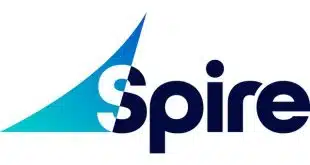Visa USA's announcement this week of a new program to foster card transactions in the growing category of small-value payments would seem at first blush to be the bank card network's answer to some observers' long-held contention that the card associations should create incentives for the emerging technology of contactless payments. In reply to queries from Digital Transactions News, however, a Visa spokeswoman says the new small-value program, which includes new interchange breaks and sets out a new program with expanded leeway for transactions without cardholder signatures, covers both swiped and contactless transactions, which are aimed specifically at cash-intensive businesses with average tickets in the small-value range. “This program does not apply to contactless payments,” the spokeswoman says, outside of certain targeted merchant categories. This would seem to leave contactless payments with no special pricing advantage over conventional mag-stripe transactions, even within the targeted merchant categories. The spokeswoman did not elaborate, but observers say Visa sees more potential for now in encouraging further penetration by mag-striped credit and debit cards into the sub-$25 payment category. At the same time, they say, contactless payments seem to be gaining traction on their own, with about 25,000 merchant locations signing on over the past year and 13 million contactless payment devices having been issued over the same time. Visa and MasterCard have in the past introduced pricing incentives to help establish new payment programs. Special interchange discounts apply to transactions flowing through their authentication systems for online payments, for example. This has led some critics to question why contactless payment technology, which relies on cards or other tokens fitted with chip-and-antenna inlays and point-of-sale radio receivers to replace conventional card swipes, has not received similar treatment. Now, though, even some experts who have argued that the bank card systems should introduce special merchant pricing or other incentives for contactless transactions say contactless technology has gained enough momentum on its own over the past year that such incentives may not be necessary. “The business case for contactless stands on its own feet at this stage, I would suspect, without the need to lower interchange,” says Gwenn Bezard, research analyst at Aite Group and previously an advocate of contactless pricing incentives (Digital Transactions News, Nov. 23, 2005). Bezard also points out that in rolling out its new small-value program, Visa is responding to clear indicators of where its greatest potential gains lie. Visa payments less than $25 in certain small-ticket categories totaled $49.1 billion last year, up 25% from 2004, with the great bulk of this activity coming on conventional cards. “Visa is driving far more significant volume with swipe than with contactless,” Bezard says. “This is likely to remain the dominant way for consumers to make low-value payments over the next few years.” The new program marks out 17 cash-intensive merchant categories in which transactions of less than $25 now no longer require cardholder signature. These include fast-food outlets, drugstores, parking lots, theaters, news dealers, laundries, and car washes. Visa says these categories account for $750 billion in consumer transactions, half of which is cash. The network says its “preliminary estimates” are that as much as 27% of all Visa transactions may qualify for the new no-signature program by year's end. The new program supersedes the no-signature portion of a pricing-incentive program for sub-$15 tickets. That no-signature rule covered seven merchant categories in which the association allowed merchants to forgo signatures for payments at or under $15. In addition, that small-ticket pricing program, which includes 14 of the 17 merchant categories, now offers an unspecified further cut in rates for Visa check card, or signature-based debit, transactions of $15 or less, effective this month. Check card payments account for 77% of Visa transactions in these segments, the spokeswoman says. This new incentive, plus those already in place for small-value credit and debit payments, yields an across-the-board cut of 20% in interchange, Visa says. The three categories in the no-signature program but not in the pricing-incentive program are drugstores, so-called miscellaneous food stores, and service stations.
Check Also
Fiserv’s Clover Goes Down Under and other Digital Transactions News briefs from 3/31/25
Fiserv Inc. has introduced its Clover point-of-sale technology in Australia. The system is now available in …



